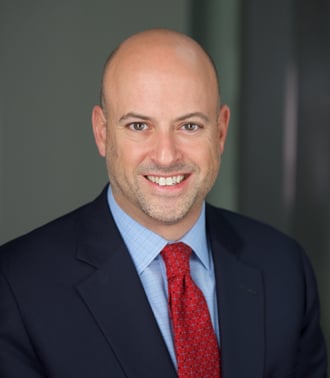Lit Alerts—October 2021
Intellectual Property: Federal Circuit Affirms TTAB Decision Denying Cancellation of SUPER CRUISE
This month, the US Court of Appeals for the Federal Circuit affirmed a Trademark Trial and Appeal Board order denying Micro Mobio Corporation’s (MMC) petition to cancel General Motors, LLC’s (GM) federal trademark registration for SUPER CRUISE.
MMC owns a federal trademark registration for SUPERCRUISE in connection with, among other things, computer hardware for use in receiving and transmitting signals. MMC asserts it first used SUPERCRUISE as a trademark in 2010. GM, on the other hand, owns a federal registration for SUPER CRUISE in connection with its semi-autonomous driving software. It adopted its SUPER CRUISE mark after MMC began using SUPERCRUISE. In its petition to cancel, MMC argued that GM should never have received its registration for SUPER CRUISE, because it was likely to cause consumer confusion with MMC’s prior SUPERCRUISE trademark.
The TTAB denied MMC’s petition. It ruled that, while the two marks were similar—being identical but for the space in GM’s SUPER CRUISE—confusion was nevertheless unlikely because the parties’ goods were not closely related. The TTAB reasoned that the goods were not sufficiently related that they would be marketed to the same consumers and rejected MMC’s argument that its goods were similar to GM’s because they were of the type that might be incorporated into GM’s semi-autonomous driving systems. The TTAB also ruled that MMC’s SUPERCRUISE mark was conceptually relatively “weak,” and therefore only entitled to narrow protection, because it was “highly suggestive” of the nature or quality of MMC’s goods, and MMC had failed to introduce evidence demonstrating that the relevant public recognized SUPERCRUISE as denoting a single source.
The Federal Circuit affirmed. It agreed the TTAB had stated the proper standard that “goods are regarded as related if the goods are likely to be encountered by the same purchasers, who would be led to believe the goods came from the same source.” It also agreed that MMC’s trademark was conceptually “weak,” because it was “highly suggestive” of the nature of MMC’s goods—notwithstanding MMC’s argument that its leadership chose the mark arbitrarily because it “liked the sound” of it.
Going forward, both MMC and GM will retain their respective trademark registrations.
Federal Procedure: Ninth Circuit Clarifies the Deadline for Removing to Federal Court Based on a Document Other than the Initial Complaint
The US Court of Appeals for the Ninth Circuit recently adopted a more explicit standard for assessing the timeliness of the removal of a state-court lawsuit to federal court. See Dietrich v. The Boeing Company, No. 19-56409 (9th Cir. Oct. 1, 2021). Under the federal removal statute, 28 U.S.C. § 1446(b), a defendant must file a notice of removal within thirty days of either (1) an initial pleading demonstrating a basis for removal (§ 1446(b)(1)), or (2) the defendant’s receipt of “an amended pleading, motion, order or other paper from which it may first be ascertained that the case is one which is or has become removable” (§ 1446(b)(3)). In an effort to dispel uncertainty and reduce collateral litigation over removal, Dietrich holds that, under the second path, the thirty-day clock does not begin to run until the defendant receives a document making the basis for removal “unequivocally clear and certain.”
In Dietrich, the plaintiff’s claim against The Boeing Corporation arose from her family members’ work on asbestos-containing aircraft. The plaintiff subsequently disclosed in discovery responses that the alleged exposure occurred during work on military aircraft, which provided Boeing with a basis for removal. The district court initially remanded the case, finding that Boeing was in possession of sufficient facts to support removal well before the plaintiff served the discovery responses. The Ninth Circuit reversed, explaining that, until the plaintiff served the discovery responses, the ground for removal was not “unequivocally clear and certain,” as is required for the removal clock to begin under the second pathway of § 1446(b)(3). In adopting this standard, the Ninth Circuit also held that information learned in a deposition does not start the removal clock; instead, the clock begins to run from the date of receipt of the certified deposition transcript.
© Arnold & Porter Kaye Scholer LLP 2021 All Rights Reserved. This Advisory is intended to be a general summary of the law and does not constitute legal advice. You should consult with counsel to determine applicable legal requirements in a specific fact situation.






